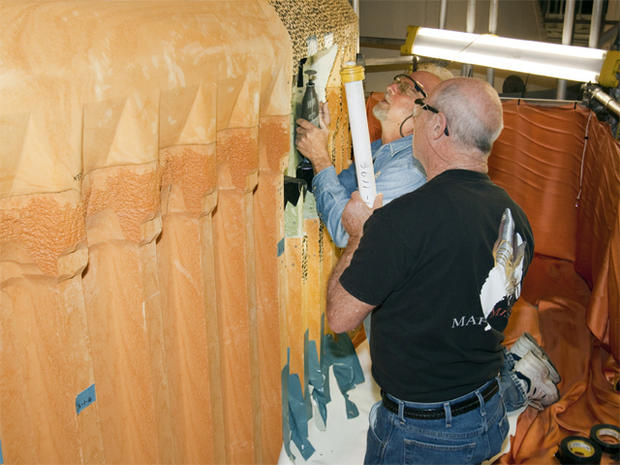NASA Rules Out Early February Launch for Discovery
NASA managers Thursday decided to give engineers additional time to assess external tank cracks and repair scenarios, ruling out an early February launch for the shuttle Discovery.
The next shuttle launch window opens Feb. 27, but NASA is assessing whether it might be possible to move that up a few days.
Additional meetings are planned next week to review progress with already-ordered crack repairs, potential work to beef-up other structural ribs (or stringers) in the external tank, and the results of an on-going analysis into the root cause of the eight cracks discovered to date.
A new target launch date is expected after a program requirements control board meeting Jan. 13 at the Johnson Space Center in Houston.
The next shuttle launch window - the one NASA managers ruled out Thursday - opens Feb. 3 and closes Feb. 10. The following window opens Feb. 27 and closes March 6.
The opening of the late-February window is based on plans by the European Space Agency to launch an unmanned cargo ship Feb. 15 to deliver critical supplies to the International Space Station. The normal flight plan calls for ESA's Automated Transfer Vehicle to dock with the lab complex on Feb. 26, clearing the way for Discovery to take off the next day.
More NASA Coverage at CBS News' Space Place
If the ATV rendezvous profile can be compressed, it may be possible to launch Discovery a few days ahead of Feb. 27. But as of this writing, it's not yet clear whether that's a viable scenario.
NASA had hoped to launch Discovery last Nov. 1. But the flight was delayed by unrelated technical problems and finally, on Nov. 5, by a gaseous hydrogen leak in a 7-inch vent line quick-disconnect fitting on the side of the external tank.
During work to drain the tank, engineers spotted cracks in its foam insulation near the top of the intertank compartment that separates the tank's hydrogen and oxygen sections. When the damaged foam was removed, four cracks were found in two adjacent stringers near the tank's left-side booster attachment thrust panel, which helps carry the load during launch.
After an instrumented fueling test Dec. 17 to collect data on how exposure to ultra-low temperatures affects the intertank stringers, Discovery was moved back to the Vehicle Assembly Building for additional inspections. Four more small cracks on three stringers were found on the opposite side of the tank from the shuttle on Dec. 29.

